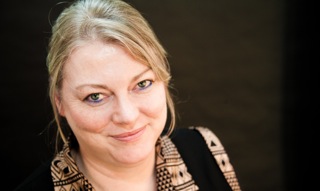
Job Ladder
Mary Cloake, Chief Executive of the Bluecoat in Liverpool, takes a moment to reflect on her career in the arts.
Chief Executive, Bluecoat, Liverpool (2012 – present)
I arrived at the Bluecoat two years ago. Since then we’ve worked hard to make the most of the building’s rich heritage while making it the home of contemporary arts in the region. Staging exhibitions of artistic excellence is at the heart of everything we do: around that central strand we continue to offer literary events, poetry, music, dance, innovative forms of performance and other arts opportunities while engaging with a wide range of participants who may not otherwise have accessed the arts. One of the great strengths of the Bluecoat is its diversity, its capacity to bring together under one roof the artists working in our studios, partners such as Alzheimer’s Society and DaDaFest, arts-related organisations such as Sense of Sound and Liverpool Arabic Arts Festival, not to mention the craft shops, bookshops, display centre and café and bistro. We are a self-contained microcosm of the arts, at the heart of one of England’s great cities.
Director, Arts Council Ireland (2004 – 2011)
By 2004 Ireland’s economy was booming, and investment to create public benefit was a high priority. As Director of the Arts Council, I felt it was critical that the arts sector should be able to grow at a time when money was available to invest. Large-scale arts organisations had been struggling for years to stabilise themselves and this was an opportunity for the country to create a number of secure and vibrant institutions that it could be proud of. The role of the individual artist in creating a dynamic and reflective society was also highlighted: investment in support for single artists and small ensembles was increased and we attempted to raise the profile of the artist in society through the media.
Development Director, Arts Council Ireland (1997 – 2004)
At this time, my role was about making links between the arts and the rest of society, and finding ways in which the arts could be more self-sustaining. Ireland as a country was starting to gain confidence and was looking for external investment, and we were able to convince investors that they could have confidence in the creative energy and ability of the country.
Regional Development Officer, Arts Council Ireland (1993 – 1997)
In the early nineties a traditional concentration of the arts in a few cities was challenged by a flowering of the arts at grass-roots level all around the country. I worked with local authorities to encourage them to respond to these developments by recognising and supporting the arts. I helped to establish arts officers in every county in Ireland and the growth of a national network of arts centres within reasonable reach of everyone in Ireland. Each area was encouraged to create its own artistic identity in order to reflect its local distinctiveness.
Arts Officer, Dundalk Urban District Council (1989 – 93)
In 1989 I moved to Dundalk, where, as Arts Officer, I ran the performing arts centre. In the Town Hall theatre I remember staging big theatre nights by touring companies such as Druid and Field Day, featuring actors such as Stephen Rea. With a team of volunteers we transformed the basement of the building into a new art gallery which remains to this day, exhibiting artists such as Patrick Hall, Michael Kane, and Robert Ballagh. A series of poetry readings and seminars on the theme of ‘Myth, History and Literary Tradition’ in which a number of major Irish poets were involved was a highlight of those years.
Administrator of the Arts Community Education (ACE) initiative (1986 – 1989)
Back in the mid-1980s, I was fortunate enough to work alongside a number of influential artists, arts policy-makers and academics in creating a national arts policy which was innovative in the new connections it proposed between the arts and society. This was an exciting moment at which the aspiration of ‘arts for everyone’ started to become a practical proposition through tangible measures such as schemes to promote artists in the community and to target different audiences such as the ‘crowd’ at a sporting event. I can now see that this type of work has reached maturity. The Bluecoat’s participation work; its long-term arts programme for adults with learning disabilities, the Blue Room; and its outreach work with communities of all kinds, shares the same core philosophy that we nurtured in Dublin three decades ago – a belief in the value of the arts as a means of developing every individual and community.
Dubliners Theatre Company (1984 – 1986)
I left Trinity College Dublin and started creating shows with friends. These involved clowning and workshops with children from the travelling community. I also toured Europe with an independent theatre company which performed adaptations of Irish literary works. Here I learned the full range of production skills from artistic direction through to the technical side of the theatre. This hands-on experience of the theatre has remained with me and continues to kindle my enthusiasm for presenting a range of live arts experiences at the Bluecoat.
Join the Discussion
You must be logged in to post a comment.